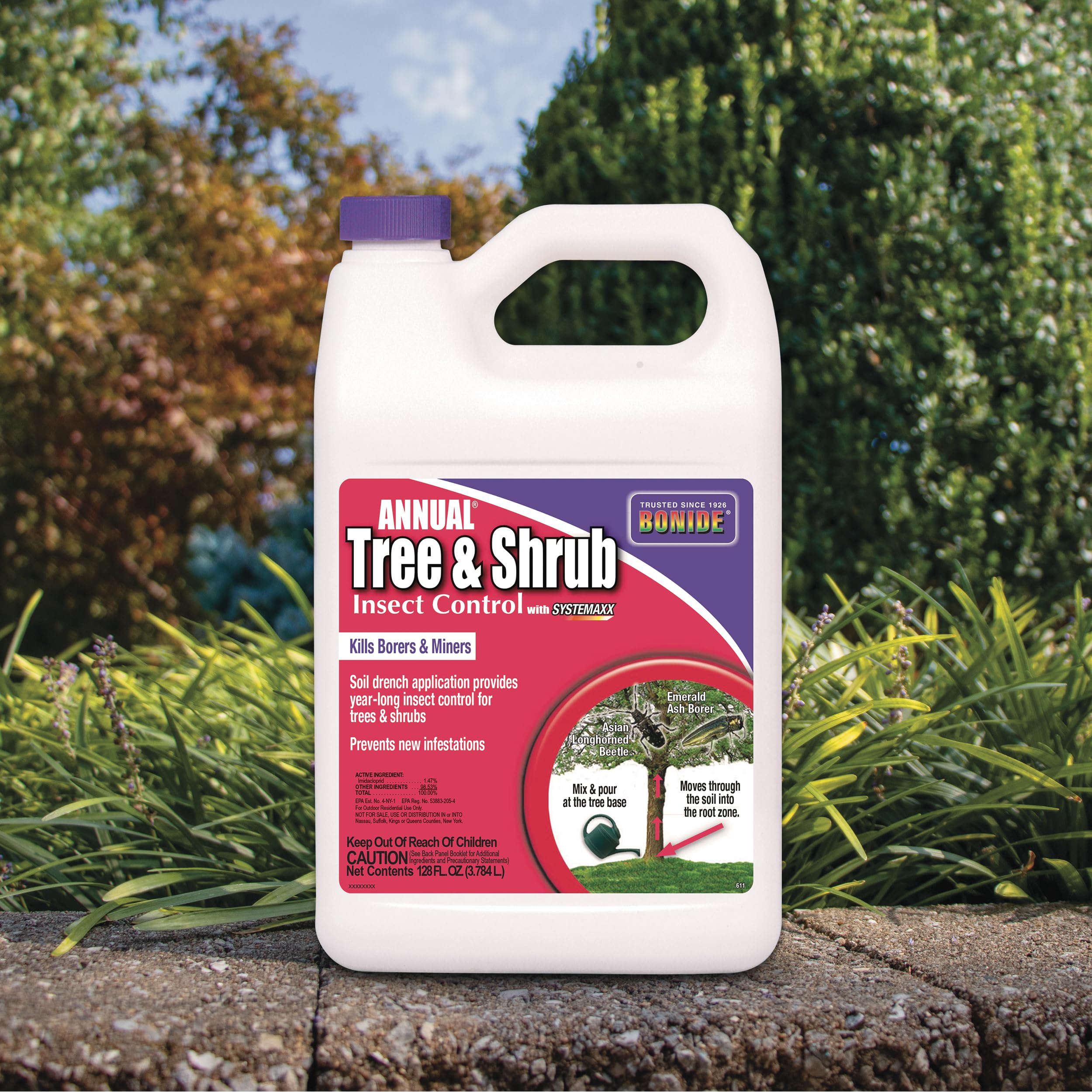Customer Services
Copyright © 2025 Desertcart Holdings Limited
Desert Online General Trading LLC
Dubai, United Arab Emirates









🌳 Keep your garden thriving with Bonide's ultimate insect shield!
Bonide Annual Tree & Shrub Insect Control with Systemaxx is a powerful 128 oz concentrate designed to protect your trees and shrubs from harmful insects like borers and miners. With a rainproof formula that activates within hours, this easy-to-use insecticide ensures your plants stay healthy and vibrant all year round.







| Liquid Volume | 64 Fluid Ounces |
| Item Weight | 8.2 Pounds |
| Target Species | Insects |
| Item Form | Spray |
L**V
Works
I originally got this to fight aphids on my crepes, working great!!! I had watched a large tree on the other side of the fence, in my neighbors backyard being eaten alive by webworms. This had gone on for three years. The tree was practically bare last summer. This year I did a bad thing. I poured this product along my side of the fence. That tree looks amazing. No webworms. Tree looks lush and healthy for the first time in years 🥰 not sorry
H**E
A product that really works and is easy to use.
I am so happy I found this product! Following directions I drenched all of my roses the day after I received this product. I’ve been waited a day before I started washing my roses off every morning for three days. I am at day nine today and I do not see any aphids on my roses Which were heavily covered with them. I like the fact that it works as well as the fact I won’t have to do it again this year! This is a once of a year drench and I will start in the early spring with it next year.
L**S
We always buy for trees and schrubs
I buy this every year. It works and we have rid elm tree beatles. My other trees look wonderful as well.Update from last review;This morning, my back yard patio (which is quite large) had hundreds of dead elm tree beatles dead laying on it. This is the second year I have used this on my elm trees. My trees finally look healthy and green, lush new growth.So after I hosed off the hundreds of dead bugs, about an hour later, there were more dead on porch. WOW, I had no idea my poor trees were so infested each year. It really is such a shock to see just how many hundreds there were. If I could have posted a picture, I would have. Bet I have several days of cleaning my porch from them.This stuff is amazing for trees and schrubs. Natural too.
E**N
Works great
This product saved my Hemlock trees
T**E
Must have to fight beetles that attack Magnolia Trees and bushes
Great stuff! It saved us a lot of money and our beautiful magnolia tree!
T**S
Fabulous product
This is the best house plant pesticide I have found to use. It doesn't. It's not labeled for house plants but I have tested it on anything from Hoya's to monsteras to philodendrons. It works great! I would absolutely 100% recommend. I'm using this my second year and it's awesome to use when you bring in your plants from being outside all summer and to treat everything so you don't bring pests in!
J**K
Works on Azaleas for lace bugs.
Works well on our azaleas. Cleared our lace bug issue several years ago. Using it again as the bugs are back.Probably need to use it once a year whether there is an issue or not.
B**S
Useful
It is great and very efficient and easy to use...no mess
Trustpilot
1 month ago
3 weeks ago